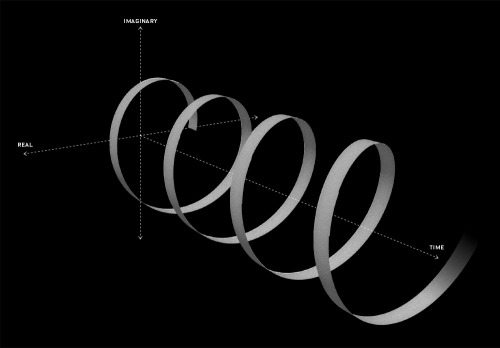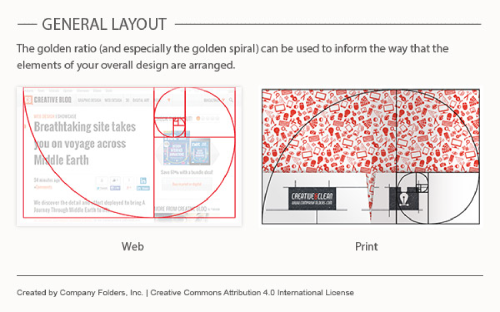LHC Breakthrough Unveils Key Facts About The Fundamental Symmetry Of Nature

LHC Breakthrough Unveils Key Facts about the Fundamental Symmetry of Nature
These measurements may help physicists determine which theory of the Fundamental Laws of the universe is most plausible… http://bit.ly/1G0Eiic
More Posts from Vanderwaalrus and Others
I had some really nice asks about math encouragement, and so I wanted to share some things from my responses:
Since I was never a math person before my mid-twenties, I had a TON of catching up to do to get my mathematics degree. This meant I couldn’t afford to compare myself to my classmates, because I was so hilariously behind that I had to accept (and even embrace) being dead last in the ranking. I had to acknowledge that as a necessary pre-requisite to attempting a mathematics degree, and I truly believe that attitude is one of the main reasons I was able to complete that degree. Because of this attitude, I was kind to myself. I applauded myself for just being able to be in each room, enrolled in each class, because it was so improbable that a former math illiterate could have gotten there in the first place. I still endeavor to celebrate every victory from ‘Yay! You showed up with your shoes tied and everything’ to ‘Look at you go! You took that really hard test and got a WHOLE THIRD of the points! That so much more than none of the points!’ That mindset kept me going, kept me from being competitive with my colleagues, and kept me feeling fulfilled and proud of my work. I never was a modern-day Gauss, but that’s fine with me. I don’t do math to glorify myself. I do math because it is important, because I love it more than I have ever loved anything. I study mathematics because the only thing I need in this life is to know more about mathematics today than I did yesterday.


Visualization showing the flow of first 10,000 digits of Pi, revealing how the number Pi looks like. Circle is divided in 10 segments, from 0 to 9. Then path is traced, going from the third segment to the first segment. From 1, the path jumps to 4, then back to 1, then 5 and so on. After a while, Pi appears in front of your eyes. The final illustration is beautiful.


Euler’s Identity: eiπ + 1 = 0. Euler’s Identity is an Equation about constants π and e. Both are “Transcendental” quantities; in decimal form, their digits unspool into Infinity. And both are ubiquitous in scientific laws. But they seem to come from different realms: π (3.14159 …) governs the perfect Symmetry and closure of the Circle; it’s in Planetary Orbits, the endless up and down of light waves. e (2.71828 …) is the foundation of exponential growth, that accelerating trajectory of escape inherent to compound interest, nuclear fission, Moore’s law. It’s used to model everything that grows. What Euler showed is that π and e are deeply related, connected in a dimension perpendicular to the world of real things - a place measured in units of i, the square root of -1, which of course doesn’t … exist. Mathematicians call it an imaginary number. These diagrams are visual metaphors. Imagine a graph with real numbers on the horizontal axis and imaginary ones on the vertical. Exponential function, f(x) = ex, ordinarily it graphs as an upward swooping curve - the very paradigm of progress. But put i in there, Euler showed, and eix instead traces a circle around the origin - an endless wheel of Samsara intercepting Reality at –1 and +1. Add another axis for Time and it’s a helix winding into the Future; viewed from the side, that helix is an oscillating sine wave.The rest is easy: Take that function f(x) = eix, set x = π, and you get eiπ = -1. Rearrange terms and you have the famous identity: eiπ + 1 = 0. That’s the essence of Euler’s alchemy: By venturing off the real number line into this empyrean dimension, he showed that disruptive, exponential change (the land of e) reduces to infinite repetition (π). These diagrams combine the five most fundamental numbers in math - 0, 1, e, i, and π - in a relation of irreducible simplicity. e and π are infinitely long decimals with seemingly nothing in common, et they fit together perfectly - not to a few places, or a hundred, or a million, but all the way to forever.
You can take this farther, too. If you write that function above in a more general but still simple form as f(x) = e(zx), where z = (a + bi), what you get is no longer a circle but a logarithmic spiral, combining rotation and growth - now both at the same time- These graceful spirals are also found everywhere in Nature, from the whorls in a nautilus shell to the sweeping arms of Galaxies. And they’re related, in turn, to the Golden Ratio (yet another infinite decimal, 1.61803 …) and the Fibonacci Sequence of Numbers (0, 1, 1, 2, 3, 5, 8, 13, 21, 34, 55, 89, …). But the weirdest thing about Euler’s formula - given that it relies on imaginary numbers - is that it’s so immensely useful in the real world. By translating one type of motion into another, it lets engineers convert messy trig problems into more tractable algebra - like a wormhole between separate branches of math. It’s the secret sauce in Fourier transforms used to digitize music, and it tames all manner of wavy things in quantum mechanics, electronics, and signal processing; without it, computers would not exist.
Remember to look up at the stars and not down at your feet. Try to make sense of what you see and wonder about what makes the universe exist. Be curious. And however difficult life may seem, there is always something you can do and succeed at. It matters that you don’t just give up.
Stephen Hawking, who turns 74 today. Happy birthday! (via astrowhat)


Fibonacci scarf finally done.









A Harry Potter themed comic from Existential Comics, exhibiting Russell’s paradox in logic and set theory.

For the first time, scientists have discovered a classic formula for pi in the world of quantum physics. Pi is the ratio between a circle’s circumference and its diameter, and is incredibly important in pure mathematics, but now scientists have also found it “lurking” in the world of physics, when using quantum mechanics to compare the energy levels of a hydrogen atom.
Why is that exciting? Well, it reveals an incredibly special and previously unknown connection between quantum physics and maths.
“I find it fascinating that a purely mathematical formula from the 17th century characterises a physical system that was discovered 300 years later,” said one of the lead researchers, Tamar Friedmann, a mathematician at the University of Rochester in the US. Seriously, wow.
The discovery was made when Carl Hagen, a particle physicist at the University of Rochester, was teaching a class on quantum mechanics and explaining to his students how to use a quantum mechanical technique known as the ‘variation principle’ to approximate the energy states of a hydrogen atom.
While comparing these values to conventional calculations, he noticed an unusual trend in the ratios. He asked Friedmann to help him work out this trend, and they quickly realised that it was actually a manifestation of the Wallis formula for pi – the first time it had even been derived from physics.
“We weren’t looking for the Wallis formula for pi. It just fell into our laps,” said Hagen. “It was a complete surprise,” added Friedmann. “I jumped up and down when we got the Wallis formula out of equations for the hydrogen atom.”
Since 1655 there have been plenty of proofs of Wallis’s formula, but all have come from the world of mathematics, and the new results have people freaking out. The results have been published in the Journal of Mathematical Physics.
Continue Reading.

Today the 2015 Nobel Prize in Physics was awarded, for the discovery that neutrinos can change ‘flavours’ and have mass.
All the science-related Nobel graphics are being compiled here: bit.ly/NobelSci2015
-
 not-a-curly-fry-blog reblogged this · 9 years ago
not-a-curly-fry-blog reblogged this · 9 years ago -
 briantheboss reblogged this · 9 years ago
briantheboss reblogged this · 9 years ago -
 limes-brittanicus reblogged this · 9 years ago
limes-brittanicus reblogged this · 9 years ago -
 xow liked this · 9 years ago
xow liked this · 9 years ago -
 nagromelyk reblogged this · 9 years ago
nagromelyk reblogged this · 9 years ago -
 natureofwords liked this · 9 years ago
natureofwords liked this · 9 years ago -
 lazerbeamjohnson liked this · 9 years ago
lazerbeamjohnson liked this · 9 years ago -
 universehobo reblogged this · 9 years ago
universehobo reblogged this · 9 years ago -
 michealanakinallen reblogged this · 9 years ago
michealanakinallen reblogged this · 9 years ago -
 michealanakinallen liked this · 9 years ago
michealanakinallen liked this · 9 years ago -
 humblejunkie liked this · 9 years ago
humblejunkie liked this · 9 years ago -
 jarmelion reblogged this · 9 years ago
jarmelion reblogged this · 9 years ago -
 potonyeczgergo liked this · 9 years ago
potonyeczgergo liked this · 9 years ago -
 khbsd reblogged this · 9 years ago
khbsd reblogged this · 9 years ago -
 khbsd liked this · 9 years ago
khbsd liked this · 9 years ago -
 iamgrantdb reblogged this · 9 years ago
iamgrantdb reblogged this · 9 years ago -
 iamgrantdb liked this · 9 years ago
iamgrantdb liked this · 9 years ago -
 vanderwaalrus reblogged this · 9 years ago
vanderwaalrus reblogged this · 9 years ago -
 vanderwaalrus liked this · 9 years ago
vanderwaalrus liked this · 9 years ago -
 biqhazard reblogged this · 9 years ago
biqhazard reblogged this · 9 years ago -
 merymad69 liked this · 9 years ago
merymad69 liked this · 9 years ago -
 flamouche reblogged this · 9 years ago
flamouche reblogged this · 9 years ago -
 sara-tha-blog liked this · 9 years ago
sara-tha-blog liked this · 9 years ago -
 skater314159 reblogged this · 9 years ago
skater314159 reblogged this · 9 years ago -
 copernican-void reblogged this · 9 years ago
copernican-void reblogged this · 9 years ago -
 delbynguyen-blog liked this · 9 years ago
delbynguyen-blog liked this · 9 years ago -
 counterfeit-anarchy liked this · 9 years ago
counterfeit-anarchy liked this · 9 years ago -
 saint-bellion reblogged this · 9 years ago
saint-bellion reblogged this · 9 years ago -
 saint-bellion liked this · 9 years ago
saint-bellion liked this · 9 years ago -
 moss-potential reblogged this · 9 years ago
moss-potential reblogged this · 9 years ago -
 enigmaticglitter liked this · 9 years ago
enigmaticglitter liked this · 9 years ago -
 enigmaticglitter reblogged this · 9 years ago
enigmaticglitter reblogged this · 9 years ago -
 visceral-thrill reblogged this · 9 years ago
visceral-thrill reblogged this · 9 years ago -
 reptarhungry reblogged this · 9 years ago
reptarhungry reblogged this · 9 years ago -
 michael-wolfenschreiben liked this · 9 years ago
michael-wolfenschreiben liked this · 9 years ago -
 spiritofcamelot reblogged this · 9 years ago
spiritofcamelot reblogged this · 9 years ago -
 eyeofsun7 reblogged this · 9 years ago
eyeofsun7 reblogged this · 9 years ago -
 eyeofsun7 liked this · 9 years ago
eyeofsun7 liked this · 9 years ago -
 futurismnews reblogged this · 9 years ago
futurismnews reblogged this · 9 years ago




